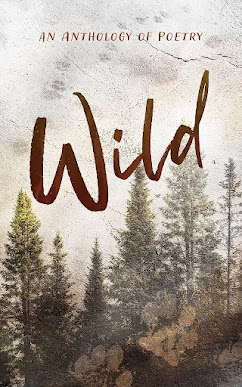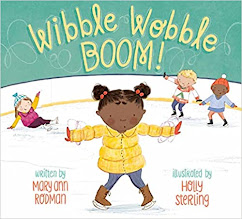Today, I'm happy to welcome back former
TeachingAuthor Laura Purdie Salas with a guest
Wednesday Writing Workout tailor-made for our current
TeachingAuthors' series on how we each "Make a Living as a Writer." Laura was one of the authors I interviewed for my article of the same title that appears in the
2016 Children's Writer's & Illustrator's Market, edited by Chuck Sambuchino (Writer's Digest Books). If you haven't entered our drawing for a chance to win your own copy of the 2016 CWIM, be sure to do so
here,
AFTER you try Laura's eye-opening writing exercise below.
 Wednesday Writing Workout:
The Cinderella Trifecta: Is Writing on Assignment Right for You?
Wednesday Writing Workout:
The Cinderella Trifecta: Is Writing on Assignment Right for You?
by Laura Purdie Salas
Hey, it’s fun to be back here at
TeachingAuthors I was
honored to be interviewed for Carmela's terrific article in the
2016 Children’sWriter’s & Illustrator’s Market.
 |
| BookSpeak! - trade market |
You know, I make my living as a writer, and I love writing
the books I choose to write (my trade market books), like
BookSpeak! Poems About Books and
WaterCan Be….
But, so far, the books I’ve loved to write have not exactly brought in
millions. Or enough to keep my family in groceries. That’s OK. They’re books I
had to write, and I adore them.
But, I do need to pay bills, and one of my major sources of
income is writing on assignment. I write books and short passages for
publishers who hire me to write very specific works for particular age groups
and, sometimes, reading levels.
 |
| Water Can Be... - trade market |
If this is something that sounds interesting to you, you
might want to give this exercise a try. Even though the majority of writing I
do on assignment is nonfiction, I also do some poetry and fiction that way,
too. We’re going to use fiction here, so that you don’t get caught up in
research and getting your facts right (which is, of course, extremely important
in nonfiction books!).
For this exercise, we’re going to use a story we likely
already know, and we’re going to shape it in three different ways.
I would like you to use the tale of Cinderella as the basis
for your short works. I’ll use The Three Little Pigs as an example for each
one. Don’t be nervous! This is just to see IF you’re comfortable with this kind
of writing and, if so, what age range might work best for you. Ready?
Part 1: Retell the complete tale Cinderella in 150 words, for 1st
graders.
My example, based on The Three Little Pigs:
Once, there were three little pigs. They were brothers. One day, the
pigs went out into the world. It was time to build their own homes.
The first little pig built his home out of straw. The Big Bad Wolf
huffed and puffed and blew the house down.
The second little pig built his home out of sticks. The Big Bad Wolf
huffed and puffed and blew the house down.
The third little pig was a hard worker. He built a strong home out of
bricks. The Big Bad Wolf huffed and puffed. But he could not blow it down.
The wolf was mad. And hungry. He came down the chimney to eat the pig.
But the third little pig was also smart. He had built a fire in the fireplace.
The wolf yelped in pain and ran away.
And the three little pigs lived happily ever after.
 |
| Colors of Fall - education market |
Part 2: Retell Cinderella for 4th graders in 400 words,
and emphasize narrative voice and theme.
My example is just the first couple of paragraphs (130
words) of such a passage, based on The Three Little Pigs.
Once up a time, there were three little
pigs. They were brothers, and two of the pigs were oh so lazy and not very
intelligent! The third little pig, however, was not only a hard worker, but he
was also very clever.
One day, it was time for the three little
pigs to go out into the great wide world and build their own houses. The first
two pigs did not want to put much effort into anything, so the first one built
his house out of straw! The second built his house out of sticks! They should
have known better. They had just finished when a big, bad wolf came along. This
wolf was drooling and snarling and hungry. He thought a little pig sounded like
a scrumptious treat.
Do you see the difference? Let’s try one more.
Part 3: Retell Cinderella for 7th graders in 600 words
from the point of view of a wicked stepsister.
Here’s my example, just the first few paragraphs (111 words),
from the point of view of the big bad wolf. It’s a little low on readability,
actually, so I’d have to make sure to use longer paragraphs and sentences here
and there and keep the reading level up a bit higher.
You can’t blame me for trying. Really, who would be ridiculous enough
to think that some insubstantial straw or rickety old sticks would be tough enough
to thwart my attempts to enter? Oh, you haven’t heard about my adventure? Well,
let me explain…
I was just wandering along the boulevard one day, minding my own
business. Suddenly, I heard a clattering sound further down the avenue. Then I
spied three little pigs, all hard at work constructing residences. At least,
one of them was working diligently. That one was mixing mortar and placing
bricks and building a proper, sturdy house--I despise that. But the other two
were much more promising.
So, how do you feel? Did at least one of these three pieces
feel somewhat natural to you? Did you enjoy the puzzle of trying to tell
certain information in a very specific way—as dictated by someone else?
 |
| Y Is for Yowl! - education market |
If the answer to at least one of the above is yes, then you
might want to try writing on assignment, too. If you’re interested in
learning about writing for the educational market, you can check out my
book,
Writing for the Educational Market: Informational Books for Kids. And Lisa Bullard, who was also interviewed in Carmela's article, and I offer critiquing/coaching
services for children’s writers at
MentorsForRent.com. We
have worked with a number of writers who have subsequently broken into the
educational market. We’d be happy to schedule a consultation to answer your
questions or review your introductory packet. I also sometimes discuss
educational writing in my eletter for writers,
A Writer Can Be….
 Wednesday Writing Workout:
Wednesday Writing Workout:





























